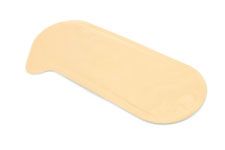Critical Parameters in Transdermal Patch Manufacturing
A QbD approach can address manufacturing complexities in transdermal patch manufacturing.
cristi180884/shutterstock.com

Transdermal patches are used to deliver drugs through the skin for either a local or systemic effect. This route can improve patient compliance by avoiding the difficulties associated with swallowing or with injecting drugs. Transdermal patch manufacturing, however, is relatively complex because it generally has more process parameters and material attributes that can impact performance, compared to some other dosage forms, says Cormac Lyons, vice-president of R&D at Tapemark, a contract manufacturing organization specializing in transdermal patches, oral thin films, and topical drug delivery. A quality-by-design approach can help address these complexities, he says. Pharmaceutical Technology spoke with Lyons to learn more about the manufacturing parameters and quality control testing involved in transdermal patch manufacturing.
Critical attributes
PharmTech: What are the critical quality attributes (CQAs) of a transdermal patch?
Lyons (Tapemark): The CQAs of a transdermal patch are the attributes essential or detrimental to the product’s safety and efficacy. These may include: drug delivery, drug dissolution, patch assay, content uniformity, residual solvents, patch adhesion, patch removal from liner, adhesive shear resistance, adhesive cold flow, bioburden, crystallization, skin sensitization, and product stability in primary packaging. These CQAs will be different based on the type of patch being developed.
PharmTech: What are the critical material attributes (CMAs) or critical processing parameters (CPPs) that affect these CQAs?
Lyons (Tapemark): There are CMAs and CPPs for each process involved in developing a transdermal patch: blending, coating, converting (i.e., making the coated film into the finished patches), and pouching (i.e., packaging individual patches). The CMAs are associated both with the raw materials and the intermediate materials made from these raw materials.
In blending for example, the raw materials are the adhesive, the API, and the different excipients. The viscosity of the adhesive and the purity and particle size of the API are important CMAs for these raw materials. The resulting blend is the raw material for the coating process. After blending, the intermediate blend’s CMAs are homogeneity, viscosity, and solids content. The blend CPPs that impact the final blend CMAs are blending time, speed, and equipment design.
Another example is the coating process. In this process, the blend CMAs of homogeneity, viscosity, and solids contents are key because they will impact the drug-in-adhesive laminate (another intermediate) CMAs such as drug homogeneity, assay, and residual solvents. In addition, the CPPs that also impact the CMAs of the output drug-in-adhesive laminate are coating thickness, line speed, and drying conditions.
Quality control
PharmTech: What quality control tests should be performed on patches?
Lyons (Tapemark): There are specific quality control tests for each of the CQAs noted previously. Two main types of testing are in-process testing and finished-product testing.
In-process testing involves understanding how materials are affected during manufacturing. This testing can help create a more robust production process and ensure the right controls are in place. In-process testing can include methods to ensure the blending process has achieved a homogenous mix. It also can include measuring and quantifying adhesion characteristics throughout the manufacturing process.
Finished-product testing analyzes the final product’s physical properties to help ensure the patch is produced with the desired physical characteristics and performs as expected. Adhesion and tack testing, for example, can help determine if the product will adhere to a user’s skin for a given period of time. Manufacturers must first define what levels of adhesion level and tack are required in a finished product and then implement the methods or tools to measure for those levels.
Article Details
Pharmaceutical Technology
December 2017
Vol. 41, No. 12
Pages: 44–45
Citation:
When referring to this article, please cite it as J. Markarian, "Critical Parameters in Transdermal Patch Manufacturing," Pharmaceutical Technology 41 (12) 2017.
About the Author
Jennifer Markarian is manufacturing editor for Pharmaceutical Technology.

Pharmaceutical Tariffs Are Imminent: How Industry is Bracing for Impact
April 16th 2025On April 14, 2025, the Trump Administration launched a national security-driven investigation into pharmaceuticals, a move that will likely result in tariffs being placed on pharmaceutical drugs, ingredients, and other components that are imported from outside of the United States.